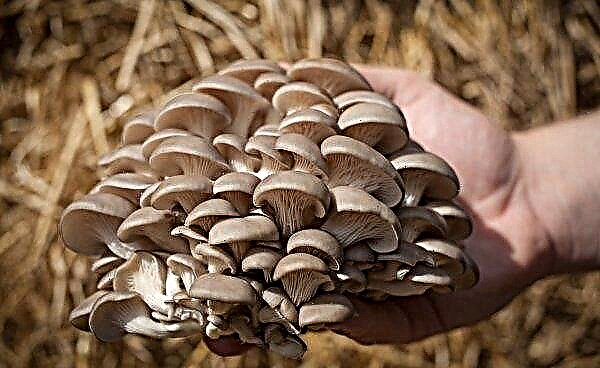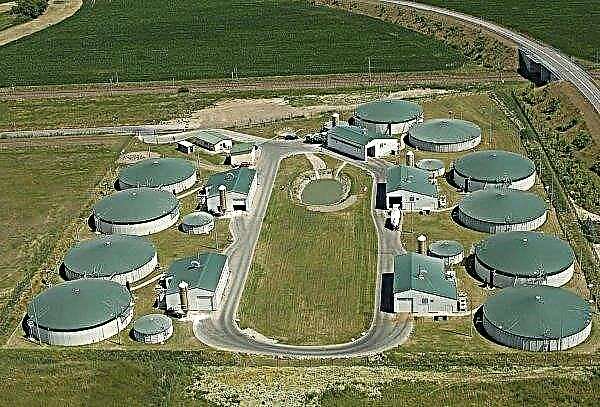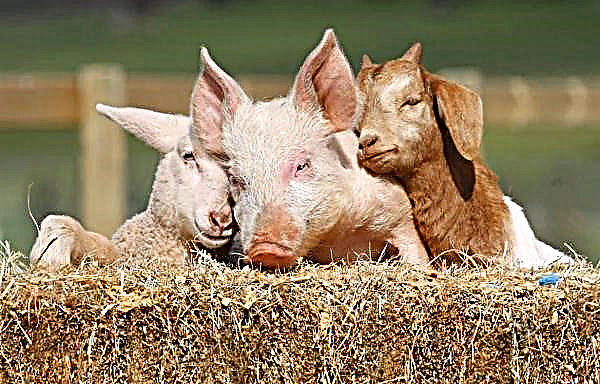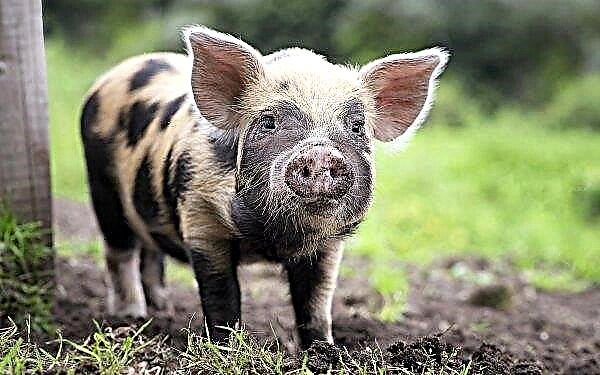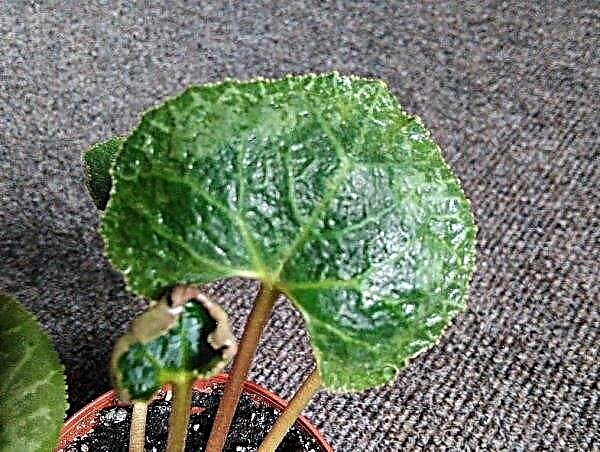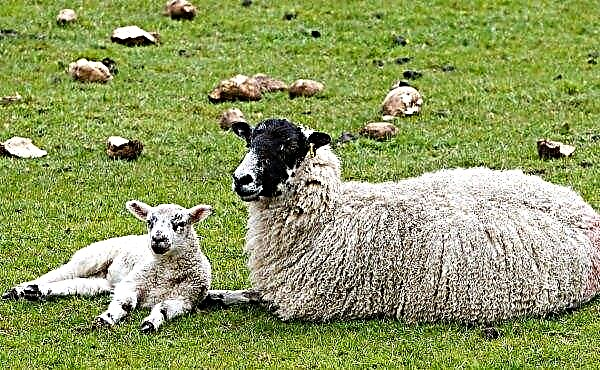Centuries of experience has proven the effectiveness of storing vegetables in the cellar, making it possible to preserve many vegetable fruits until a new crop. The features of winter storage of cabbage in the cellar will be described in the article.
Is it possible to store cabbage in the cellar in winter
To the question of how to keep cabbage fresh until spring at home and where it is better to do this, the most clear answer is the national experience, which clearly indicates the optimal storage conditions for cabbage created in the cellar. Cabbage heads are kept both in the underground of a wooden house, and in general in any underground, and in the basement, and in the sand pit, and in the caisson.
Did you know? Scientists still have not been able to establish a wild relative of today's garden cabbage, as well as the region where it first began to be cultivated.
Some people try to keep the vegetable in a warm basement, but in the end they come to the conclusion that it is most correct to store cabbage in the cellar, where optimal storage temperature and humidity are created. The above conditions are true if it is not about the industrial cultivation of cabbage.
Which varieties are best suited
The best conditions created for long-term storage of cabbage forks do not guarantee their long-term safety if a cabbage variety suitable for this is not selected. Early cabbage in any conditions is not able to maintain its consumer qualities for more than 2.5 months. But mid-ripening and late-ripening varieties, such as the Zastolny variety, can do this perfectly.
Did you know? In ancient Greece, cabbage was considered a symbol of sobriety, because people were sure that it was able to combat alcohol intoxication.
Most often, cabbage of mid-ripening and late-ripening varieties is sent for winter storage in the cellar, among which are:
- Aggressor F1, which is able to be stored in the cellar for six months;

- Frost, lying down to a new crop;
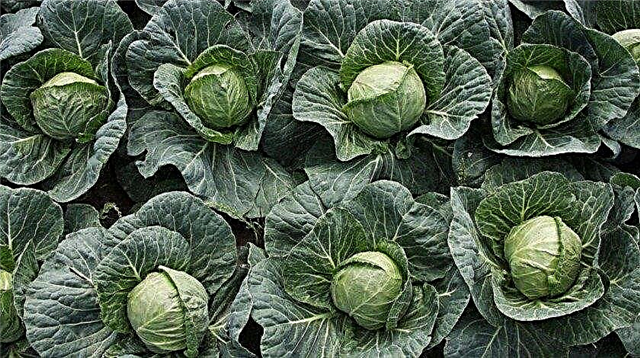
- Mara, stored until April;
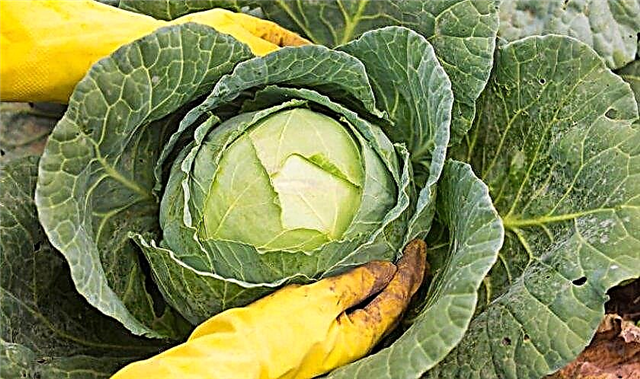
- Amager F11, preserving consumer qualities up to 8 months;

- Guarantor F1, valid until June;

- Snow White, well-preserved six months;

- Valentine F1, capable of being stored for up to 8 months;

- Gingerbread man F1, keeping condition until April;
- Stone head with a shelf life of up to 8 months;

- Wintering, extending to the harvest of early cabbage;
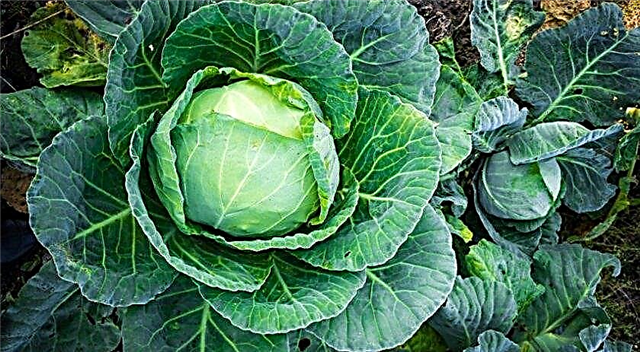
- Late Moscow, able to maintain excellent condition for up to 8 months;
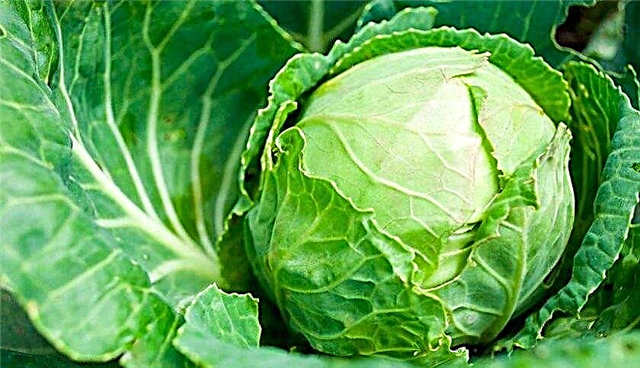
- Blizzard, characterized by a shelf life of up to 8 months;

- Kharkov winter, the shelf life of which reaches six months.

Cellar and vegetable preparation
Successfully selected cabbage varieties will not be able to be stored for a long time if both the cellar and the cabbage heads themselves are not properly prepared. In the cellar, its walls and ceiling should be treated with antiseptic agents. For this, quicklime and sulfur fumigation are most often used at the rate of 35 g per m². The cellar must be freed from old things and garbage, and especially take care of the lack of access to rodents that can ruin and even destroy the entire crop.
Of decisive importance is the temperature at which cabbage will be stored, and the humidity level in the cellar, which can be controlled by good ventilation, also plays an important role. Harvesting cabbage forks is best done on a sunny day. It is not recommended to cut them off - it is better to dig with a shovel, leaving roots on them together with the earth that has been preserved on them. Excessive, especially spoiled integumentary leaves should be removed, but 2-3 of them must be left, because without them the shelf life of the heads is sharply reduced. When laying vegetables for long-term storage, you should get rid of:
When laying vegetables for long-term storage, you should get rid of:
- hollow forks;
- head of cabbage with signs of rot;
- cracked fruit;
- frosted forks;
- spoiled by insects head out.
Important! Heads sent for long-term storage should never be washed.
How to save cabbage for the winter in the cellar
Heads of cabbage should be placed in a cellar so that they did not touch each other. The best option is to hang the forks by the stump to the ceiling.
In addition, the following methods are practiced:
- wrapping heads with cling film;
- fruit storage in plastic bags;
- wrapping the forks in food paper, which allows them to be folded into boxes;
- Coating the heads with a layer of clay, which guarantees them excellent preservation.

Storage time
About which heads of cabbage varieties and how many are able to be stored in the cellar, it was already mentioned above. On average, cabbage forks have a shelf life between 3 and 6 months. Hybrids of white cabbage demonstrate particularly good keeping quality and most often persist for more than six months.
Optimal conditions
Trying to keep the late cabbage as good as possible until the new harvest, you should create the most favorable conditions for it in the cellar. They consist in the optimum temperature, which lies between –0.8 ° С and + 2 ° С, and humidity at the level of 97%. A lower temperature can lead to freezing of the forks, and at a higher temperature, putrefactive processes in heads of cabbage can begin.
In addition, the correct gas composition of the air in the cellar, which is regulated by ventilation, matters. Up to 8% oxygen and not more than 3% carbon dioxide should be present in the atmosphere of the storage.
What vegetables can be stored in the neighborhood
Usually in the same cellar with cabbage you can find:
- potatoes;
- beets;
- pumpkin;
- carrot;
- zucchini.
Cabbage can get along with all these vegetables, however, experts recommend keeping them as far away as possible from cabbage forks, which will contribute to their better preservation. And in this regard, hanging cabbages to the ceiling ideally helps to maintain a distance between them and other vegetables.
Important! In no case should you mix cabbage forks with potatoes, beets or other root vegetables in one box.
Useful Tips
Experienced vegetable growers advise:
- With an unexpected onset of frost, you do not need to immediately cut the forks. It is better to wait until the frozen cover leaves are thawed, after which they can be removed and sent to head for long-term storage.
- If, for lack of free space, cabbage has to be laid in bulk in the cellar, it is advisable to first lay wooden grates pre-treated with baking soda on the floor or cover the floor with a layer of straw. But in any case, this method of storage does not guarantee the long shelf life of the product.
- But on the other hand, long-term preservation is guaranteed by the method in which each head of cabbage is dipped into an earthenware mash, after which it is dried and suspended by the stump under the ceiling.
 Storing this vegetable in the cellar, where optimal conditions are created for this, allows you to eat fresh cabbage almost all year round - from the previous harvest to the next.
Storing this vegetable in the cellar, where optimal conditions are created for this, allows you to eat fresh cabbage almost all year round - from the previous harvest to the next.













